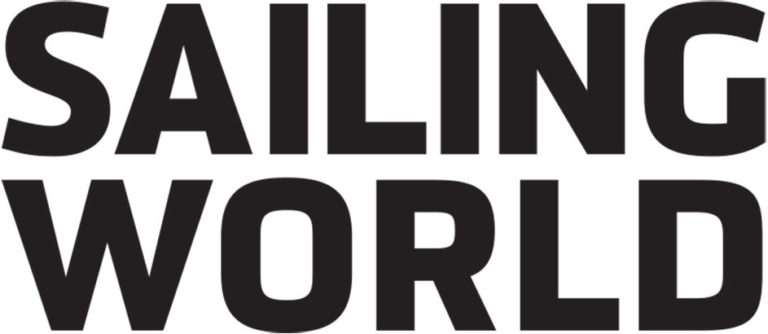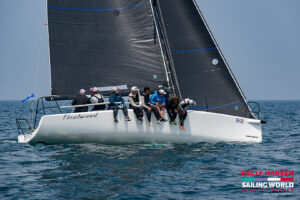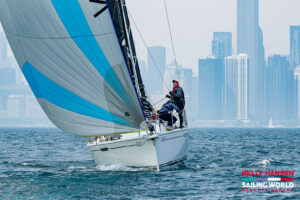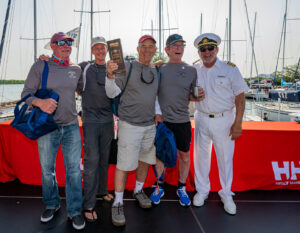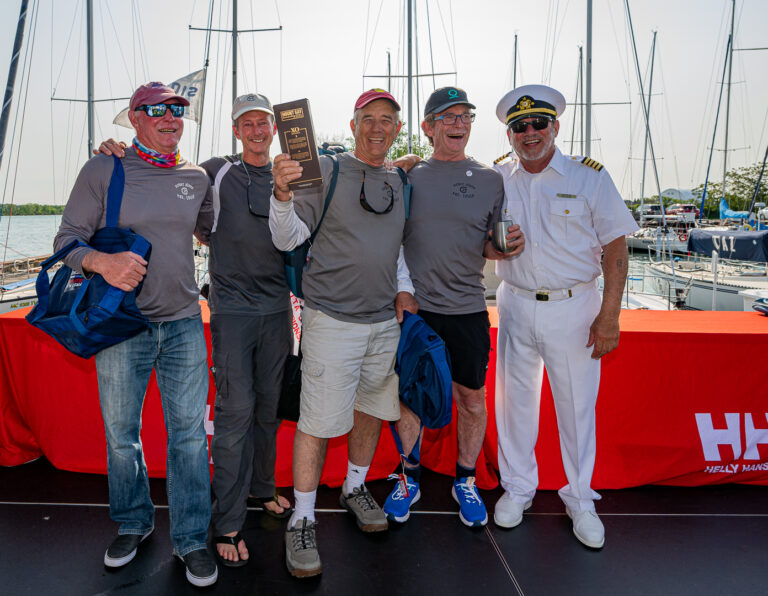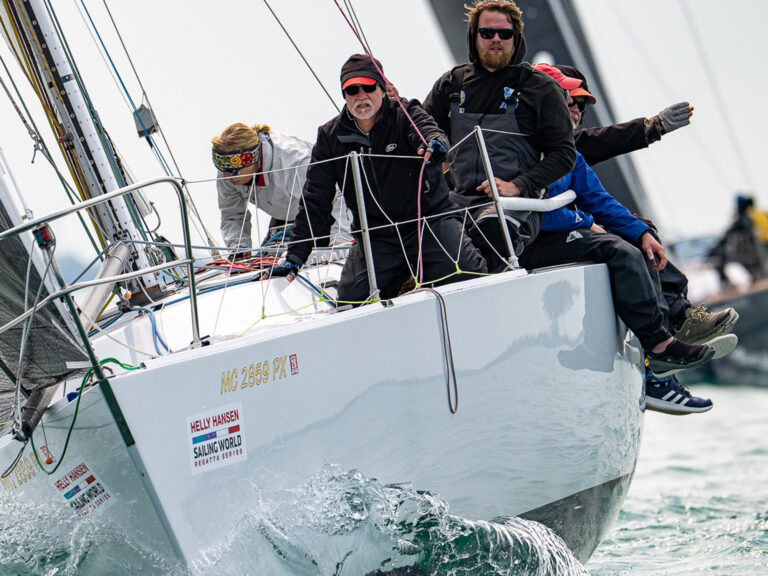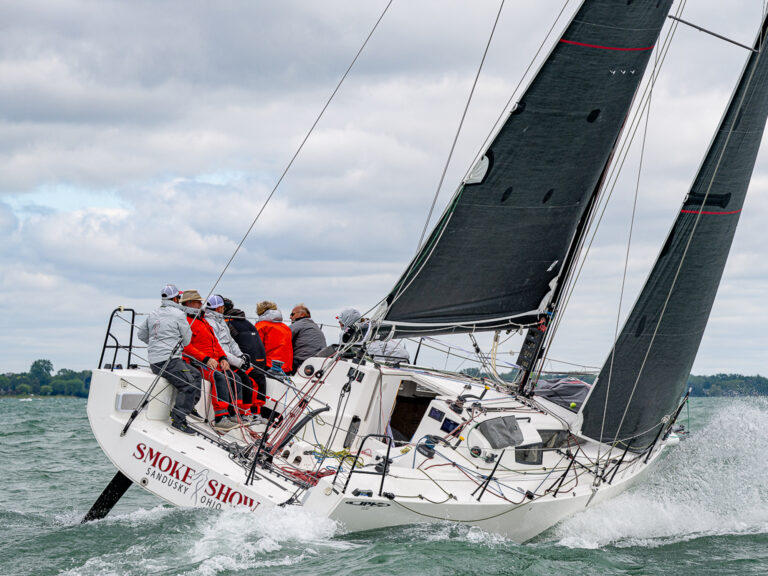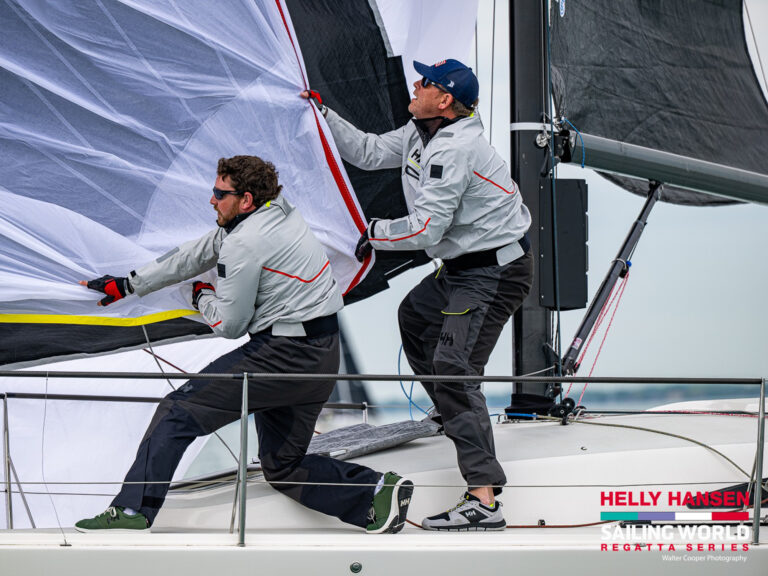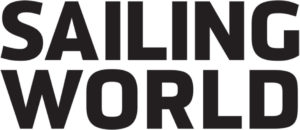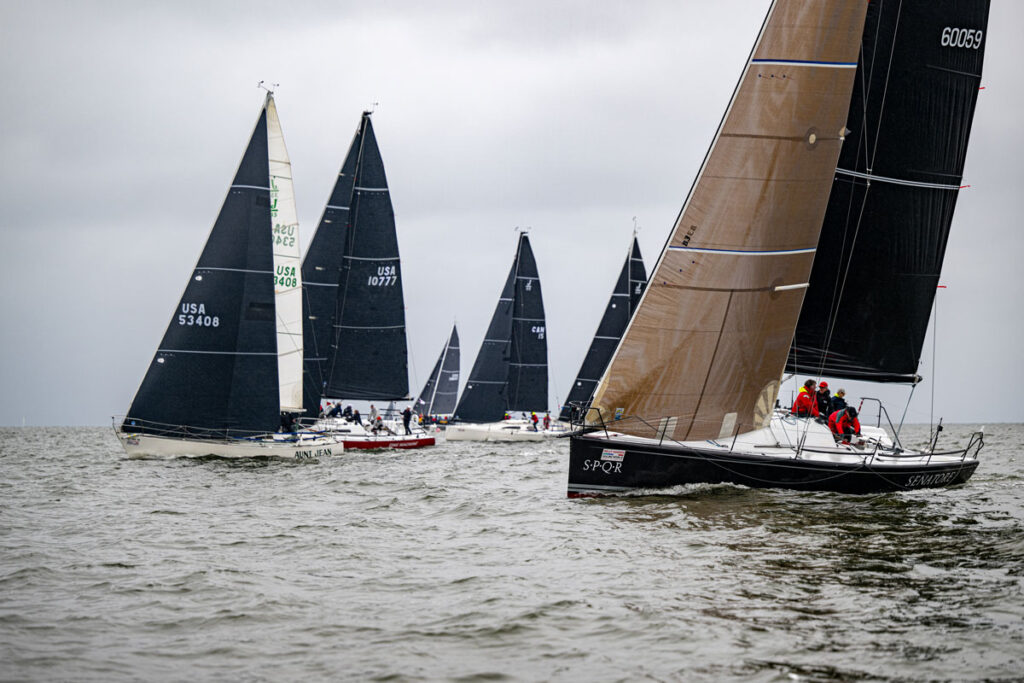
Given the dense and diverse concentration of performance-leaning sailboats in the Chesapeake, there is a deep heritage of racing that spans nearly a century. Over the years, practically every handicap rating rule has been applied in the interest of fair, competitive and fun racing, with some enduring more than others. In Annapolis today, PHRF and ORC coexist and serve their respective owners, but ORC is being embraced by a fast-growing number of owners who are keen to race under an objective rating system that accommodates an astonishingly diverse fleet of designs. As Exhibit A, look no further than the ORC scratch sheet of this year’s Helly Hansen Sailing World Regatta Series, which spans from a sporty Melges 24 to a 12-ton C&C 44.
“ORC is growing nicely and we’re solid,” says John White, who has been successfully racing his vintage Abbott 33 alongside the area’s more modern and grand-prix designs. “If you’re going to seriously race handicap in the Chesapeake, ORC is really the only good choice. Everyone sees it.”
ORC was new to the US seven years ago when Annapolis YC race officials founded ORC of the Chesapeake, but it is gaining greater traction every year White says.
“This initial interest was driven by a problem identified throughout the US, that the prevailing handicap systems could not fairly handicap an increasingly diverse selection of boats populating local fleets,” says ORC measurer Dobbs Davis, the Annapolis-based advocate of the rule who has spearheaded its US rollout. “Small, light, fast sportboats, for example, may on average perform the same as larger heavier boats, but much differently as the wind conditions vary away from the average, and so the ratings were rarely ideal on most days in a sailing season.”
ORC’s multiple rating options, Davis says, offer a solution, as does the system’s ability to rate boats objectively based on real measurement data rather than owner-declared data for sails, rigs and other parameters.
Once Annapolis’ more serious sailing teams embraced ORC, many of the area’s rank-and-file racing programs soon followed suit. “Within a year of ORC use in our area we saw racing participation increase by about 20 percent,” says Jonathan Bartlett, past commodore of Annapolis YC. “We started with just the fastest boat classes, but this has grown in acceptance to nearly all our classes now.”
ORC of the Chesapeake’s Open division provides the highest level of handicap racing on the bay and includes windward/leeward, government mark and point-to-point races. In contrast, the Performance Cruiser division consists of crossover designs only, which are eligible for races that sail courses using government marks or so-called “destination races.”
“ORC Chesapeake’s largest event to date has supported three classes in ORC Open and a Performance Cruiser division with as many as two classes,” White says. “Given that, it’s clear the Performance Cruising is working, as is the Open. It’s proven that boats of all ages can win and that’s what’s great about it. You don’t have to have a new boat, you just need to have a well-prepared boat.”
“A steady increase in entries and the number of participating clubs and events over the past three years is a strong indication ORC of the Chesapeake’s measured efforts are paying off. The organization has been steadfast in controlling the number of ORC events to prevent owner burnout while providing for a variety of racecourses to ensure enjoyable races for all classes.”
—John White, ORC of the Chesapeake
A steady increase in entries and the number of participating clubs and events over the past three years is a strong indication ORC of the Chesapeake’s measured efforts are paying off White says. The organization has been steadfast in controlling the number of ORC events to prevent owner burnout while providing for a variety of racecourses to ensure enjoyable races for all classes. In 2024, there were 17 events on the ORC of the Chesapeake calendar, with a wide variety of formats: three regattas had windward/leeward racing, three were overnight distance races, and the remainder were daytime destination and distance races.
“These trends are very encouraging, and we think we’ve managed to get a lot of boats that were sitting at the dock to come out to race,” White says.
The group initially embraced ORC Club certificates, which provide an easy on-ramp for boat owners because a full measurement is not required. As ORC has become more widely embraced, however, more owners have taken the step toward securing a proper measurement. Currently, more than half of the group’s participants have ORC Club certificates, with the rest having measured ORCi certificates.
While the prospect of getting fair ratings has gained ground in other fleets across the US, another significant challenge for growing ORC’s popularity in local fleets has been getting local race committees trained on how to use more sophisticated scoring tools to unlock the potential for more fair racing. This has meant a significant effort to educate race managers on how to best score races based on course geometry and wind conditions during the race.
“This is an ongoing effort,” White says, “and we’re fortunate to have a deep bench of talent at Annapolis YC who have been managing ORC races throughout the US, so we benefit from their experience and guidance. The challenge is sharing this knowledge among the clubs and races with less experience.”
White’s Abbott 33 was a personal “COVID project,” and racing it under ORC was an afterthought, he says, but, “We sailed it, got measured and realized it would work, and it does work.”
But it works because the boat is meticulously prepared, which is the same fundamental for success in one-design racing or any other rating system. “You can buy an old boat that’s not worth much money, not spend a ton on it and do fine,” White says. “Every boat will have its day. Our fleet has a huge mix, and the results are always mixed, which is what it’s supposed to be. Well-sailed boats with ORC Club certificates being able to co-mingle with the fully measured boats is pretty slick.”
